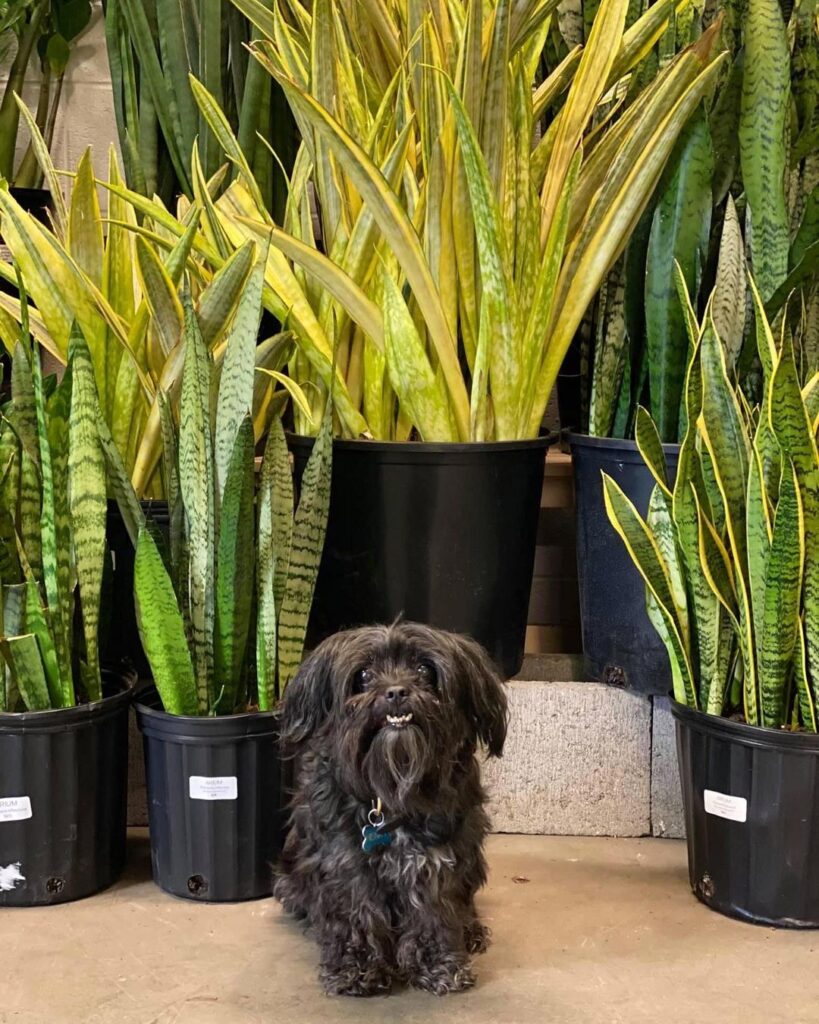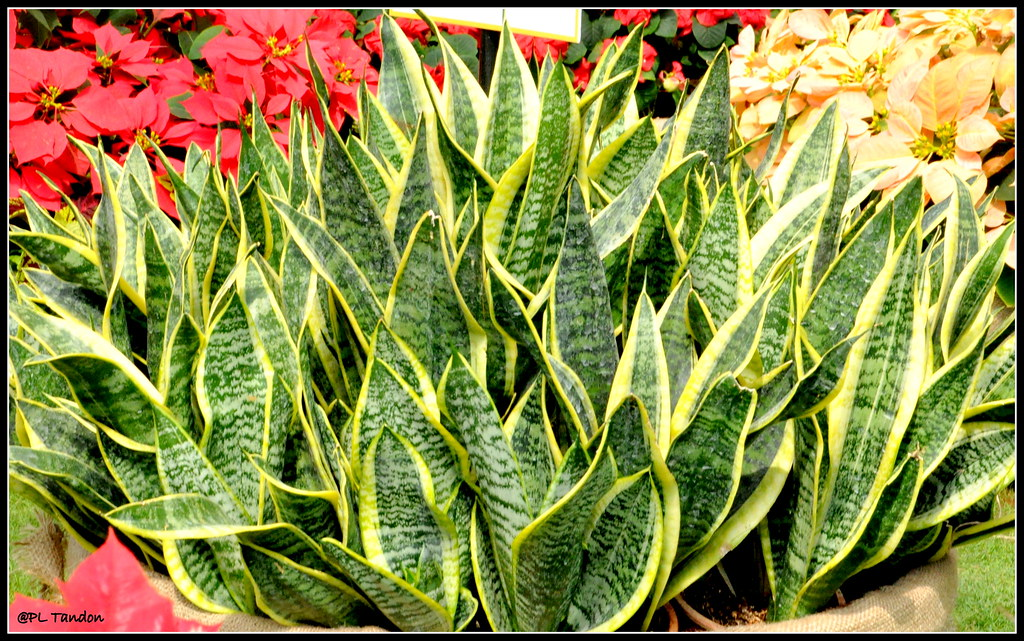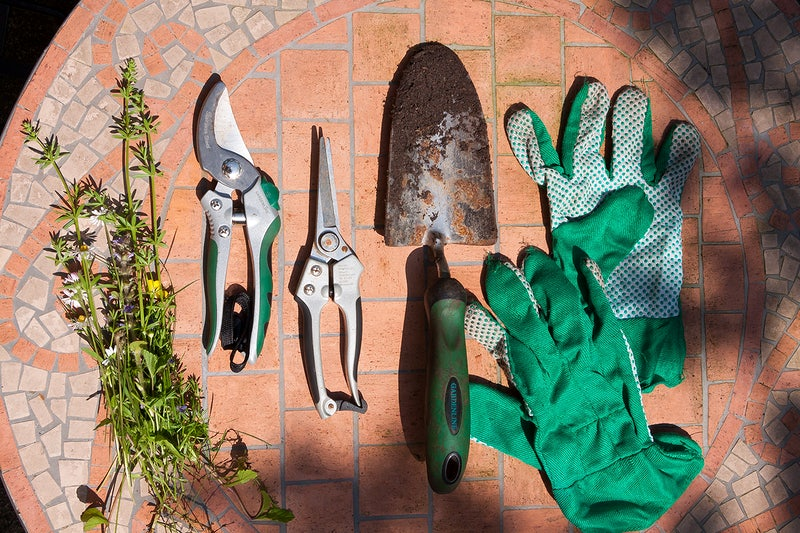We are very cautious about what our dogs eat as dog owners. We keep them as far away from foods like grapes and chocolate as we possibly can. However, the majority of pet parents probably aren’t aware of this fact, but the common houseplants can be poisonous to your four-legged pets. Let’s find out, are snake plants toxic to dogs?

If you have the popular snake plant in your living space, then you must read through the article. The plant has the potential to be poisonous to your dog, even if it is lovely to have indoors.
Because snake plants contain saponins, a natural chemical produced by the plant to defend itself against insects, bacteria, and fungi, they are mildly toxic to dogs. Dog’s symptoms include vomiting, nausea, lack of appetite, excessive drooling, and in the worst-case scenario, ruptured red blood cells.
But do not worry because you can learn everything you need to know about the unhealthy connection between man’s best friend and the snake plant in this article. So, keep on reading!
Is Your Snake Plant Toxic To Dogs?

On the surface, the snake plant seems like a harmless plant. However, it turns out that it may be highly dangerous to your pets, living up to its reputation.
Snake plants, often called Golden Bird’s Nest, Good Luck Plant, and Mother In Law’s Tongue, are poisonous to dogs. If you own a dog, you are aware that it will attempt to consume virtually everything, and there is a high risk is that they could try to devour this plant as well.
If they consume a snake plant, they could have poisoning symptoms. Some may be minor and manageable. But if they consume a lot of it, they could experience severe allergic responses. Even red blood cell ruptures may result, which is potentially lethal.
How Toxic Are Snake Plants To Dogs?
The organic compound saponin is what gives the seemingly safe snake plants their toxicity.
Many different plants contain the potential toxic chemical saponin. When it comes into touch with water, it foams and tastes foul. As a result, it serves as a natural insect deterrent in many plants.
Your dog’s digestive tract may become irritated due to the toxin’s foaming characteristics. Additionally, it can impede regular cell function, which might result in ruptured red blood cells.
Not all of the saponins, though, are detrimental. For instance, the saponins in foods like spinach and oats help us absorb silicon and calcium more efficiently. This facilitates simple food digestion in our body.
RELATED: Are Snake Plants Toxic To Cats? All The Answers You Need and More
What Parts Of The Snake Plants Are Toxic To Dogs?

Organic acids and saponins are present in abundance throughout the Mother-in-Law’s plant. Hence, all sections of the snake plant should be avoided because of how toxic the saponins can be. Unfortunately, saponin is also present in the plant’s erect, long leaves and stems, which your dogs may easily reach.
Your snake plants may occasionally bloom, giving off perfumed, greenish-white blossoms that resemble lilies. These blossoms will ultimately develop into reddish-orange berries. These fruits and blossoms are likewise dangerous, so your dogs shouldn’t consume them either.
The juice or sap from the plant’s leaves may cause moderate skin irritation. However, because of their hairy bodies, dogs are less likely to come into direct contact with them.
What Are The Symptoms Of Snake Plant Poisoning In Dogs?

A swollen or numb tongue is one sign of snake plant poisoning if a dog ingested it accidentally. If chewed or swallowed, snake plant poisoning can also result in a throat allergy reaction.
Some of the signs of poisoning you should watch out for if a dog ingests it include:
- Appetite Loss
- Diarrhea
- Nausea
- Excess drooling
- Vomiting with blood
- Depression
- Severe allergic reactions
- Gastrointestinal Upset
Moreover, dogs ingesting snake plants may have dilated pupils as a result of Mother-in-Law’s Tongue toxicity.
Dog Snake Plant Poisoning Diagnosis
When you get to the vet’s clinic, the doctor will start by giving your dog a physical examination. This will enable her to evaluate his symptoms and quickly record any anomalies in his vital signs. If your dog vomits while being treated at the clinic, the vet will check the contents for any signs of what he may have eaten.
To rule out other potential causes of your dog’s diarrhea, a fecal sample may be obtained, and run tests. Your veterinarian will want to rule out things like excessive gut bacteria and internal parasites.
A blood test will be done to help the veterinarian determine how well the internal organs are working and whether any issues are emerging. A chemical panel and complete blood count (CBC) will give the veterinarian the data they need to make an accurate assessment. The packed cell volume (PCV) test can also be used to assess hydration levels.
In order to further assess kidney function, your veterinarian may also do a urinalysis if she determines that it is required.
The doctor can determine which pollutants are harming your dog. When you visit the clinic, be sure to carry a piece of the plant.
RELATED: Snake Plant Leaf Curling: Main Reasons Why It Happens and Solutions
Dog Snake Plant Poisoning Treatment
Your dog’s therapy will be based on the signs of snake plant poisoning he is exhibiting. The vet may induce vomiting in an effort to clear the stomach of any leftover plant matter if your dog is not vomiting or has not vomited at all since ingesting the plant. In order to absorb the remaining poison before the body absorbs it, she can also elect to inject activated charcoal.
Your veterinarian will begin fluid therapy with electrolytes if your dog is throwing up and has diarrhea. Any dehydration your dog is suffering will be treated with fluids to stop it from getting worse. This will also aid in safely and swiftly flushing the poison from the body.
The veterinarian will provide any more therapeutic drugs as needed. For example, she could give your dog an antiemetic if she is violently vomiting. Medication to safeguard the lining of the stomach and intestines may be given if he is experiencing digestive distress. Your dog will receive further treatments based on his symptoms.
Again, since snake plant poisoning has no recognized cure, the symptoms will probably be handled as they appear. As a result, certain ailments may merely call for observation, while others can call for a brief hospital stay.
You can take the following actions to help avoid snake plant poisoning in the future:
1. Take Out Remaining Plant Debris
Rinse your pet’s mouth out completely with water to get rid of any remaining plant matter. To stop the plant material from being digested any further, it is feasible to induce vomiting or utilize gastric lavage to empty the stomach’s contents.
2. Give Extra TLC
When the symptoms start, it is feasible to apply certain therapeutic techniques to aid the dog’s rehabilitation.
Intravenous fluids may be administered to the dog if severe vomiting or diarrhea causes dehydration. Antihistamines or medications that soothe the stomach may also be used to help with swelling and open airways. Some dogs may require assistance with feeding sloppy or mushy food.
Dog Snake Plant Poisoning Recovery
Most dogs that have consumed snake plants are likely to require one or two days to recover completely. Therefore, it is quite improbable that this plant’s toxicity would result in death.
To avoid dealing with the same problem again, relocate the plant to a location in your house where your dog cannot get it. Please keep your dog indoors, where you have complete control over what it is exposed to, as this is the only way to protect it from dangerous plants that are growing outside.
Keep in mind that treating snake plant toxicity might be expensive. In order to avoid paying for expensive veterinary treatment, getting pet health insurance right away may be a wise proactive move. You’ll be better protected against unexpected medical costs the sooner you cover your pet.
How To Handle Snake Plants Properly To Protect Yourself And Your Dogs

If you can’t get rid of them completely from your home, try to keep snake plants as far away from dogs, cats, kids, and other animals as you can.
Wear gloves if you decide to handle the plant to prevent saponins from getting on your hands. Also, to avoid accidentally putting plant juice in your eyes or mouth after touching the plant, remember to wash your hands.
Contact your vet as soon as you can for assistance if your dog exhibits symptoms of swallowing a snake plant.
RELATED: Snake Plant Brown Spots: Top Causes and How To Fix Them
Safe Houseplant Alternatives For Dogs

It is natural if you no longer desire snake plants near your home after learning about their possible threats. So what do we do with the gaping, snake plant-shaped hole that has just appeared in your life?
Luck for you, there are other attractive and distinctive solutions available on the market that are safe for your canines. So you won’t have to worry about these plants if your devoted pals devour them by mistake.
1. Spider Plant
The spider plant, often referred to as ribbon plant, spider ivy, and hen & chicken, is a well-liked plant in the neighborhood. Its white and green tendrils give the impression that ribbons are emerging from the ground or that spiders are clinging to your pot.
These plants require little upkeep. They don’t need a lot of water or sunlight. They thrive on soil that drains properly.
2. Staghorn Fern
The staghorn fern closely resembles a stag’s horns. Rooms that receive direct, strong sunshine are ideal for these plants. However, excessive exposure to direct sunlight should be avoided since it might harm the leaves.
If cared for properly, these plants will also last the winter and continue to produce gorgeous antlers for up to 90 years!
3. Sweet Potato Vine
Although it may seem strange to consider a potato plant as an interior aesthetic plant, the sweet potato vine has some of the most exquisite leaves and tendrils.
However, admiring rather than eating its leaves is preferable. They are not tasty delicacies.
However, they make up for what they lack in flavor with their vivid yellow, green, and even purple foliage.
4. Prayer Plant
The Brazilian prayer plant is the next item on our list. Its action gives rise to its moniker.
It has flat, regular leaves during the day. It will fold these leaves into hands throughout the night, as though in prayer.
The prayer plant has gorgeous velvety green leaves with crimson veins and yellow dots. Indirect sunlight and greenhouse-like conditions are ideal for its growth.
5. Aluminum Plant
These plants feature silvery-patterned leaves that are a beautiful green color. They enjoy expanding. They occasionally could even damage your container!
You must cut them down annually to half their stem height in order to ensure good leaf growth. They enjoy a lot of indirect light. Like the prayer plant, these plants can also become burnt in direct sunlight.
Final Thoughts
We really hope that this article has given you additional knowledge regarding how and why snake plants are poisonous to dogs. So be more cautious with the plants you bring inside while satisfying your desire for beautiful indoor plants and keeping your pets safe.
Have a joyful and safe planting!
Editor’s Recommendations
Sansevieria Plant: Important Care Tips, Watering, and Propagation Guide For You
Snake Plant: Is It A Succulent? The Answer You Need To Know!
Moonshine Sansevieria: #1 Care, Propagation, and Watering Guide







